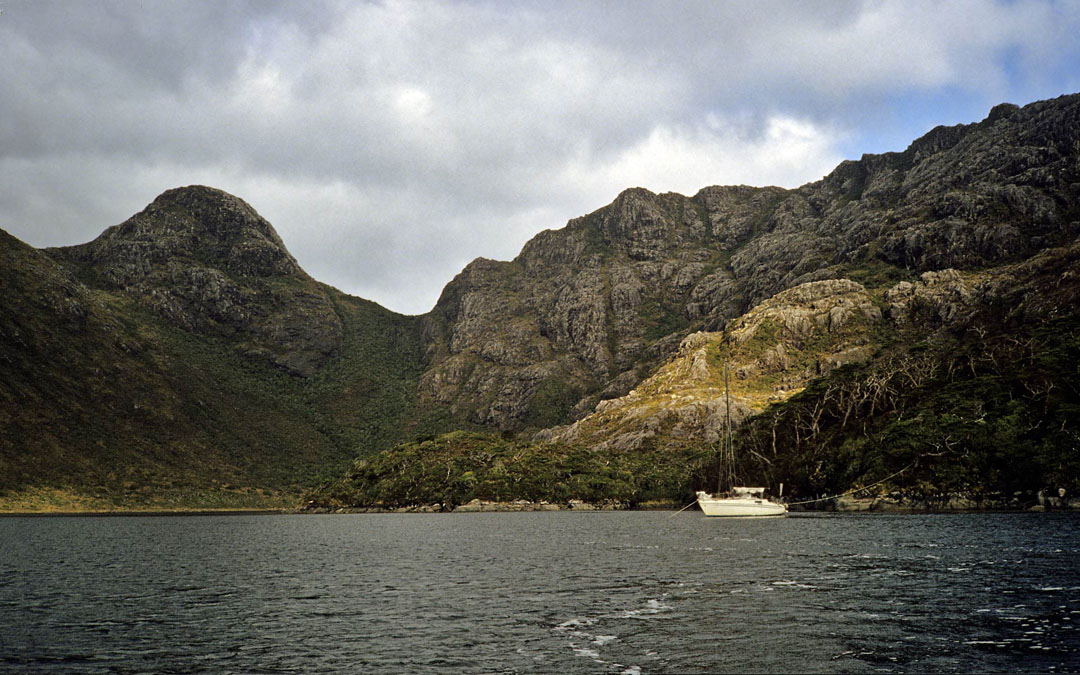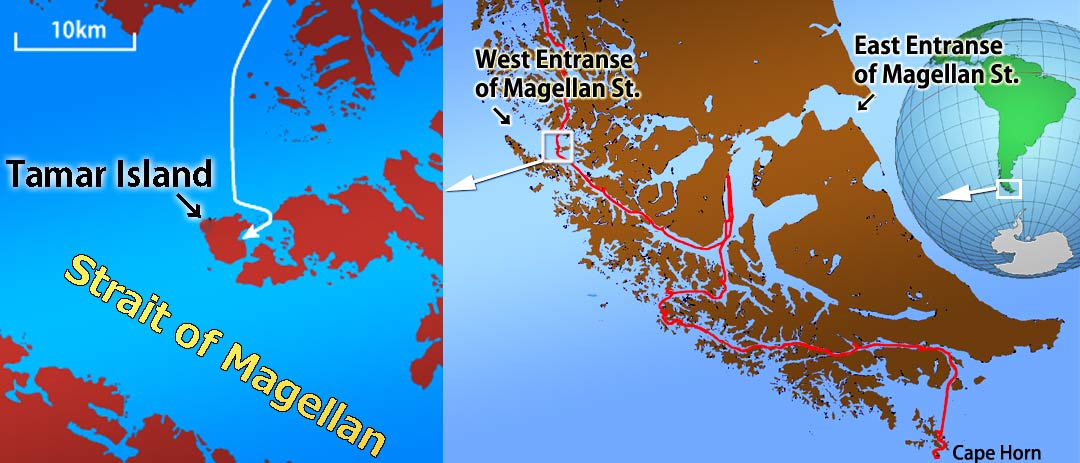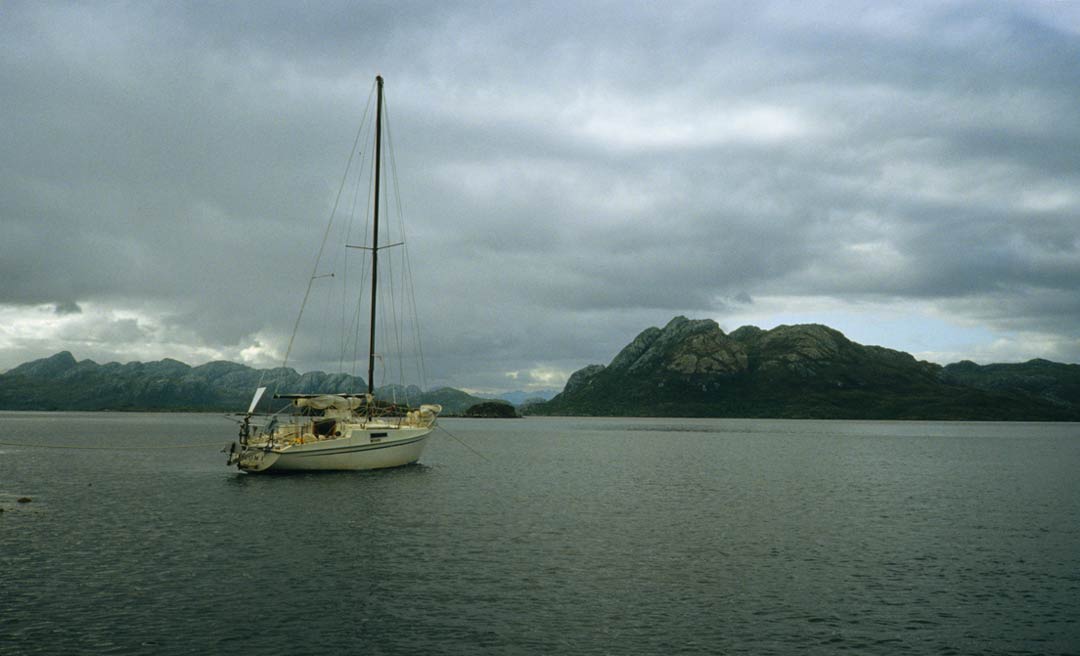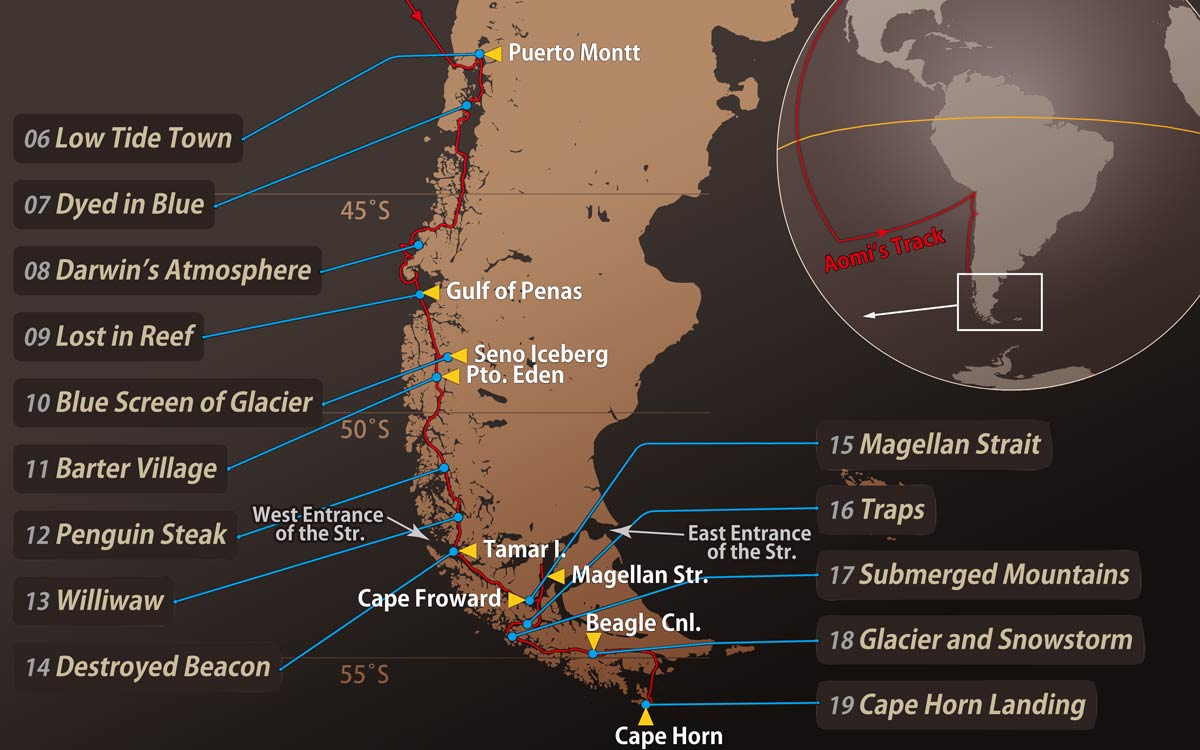14. Destroyed Beacon
Sometimes, we go forward trusting and relying on certain people, tools, or other things. But what do we do when we are in trouble, and the things we rely on are no longer there?
In the Strait of southern Patagonia, I am filled with disappointment and fear.

“The entrance is dangerous and should only be approached during periods of good visibility.”
The U.S. Military Sailing Directions, which I always rely on, contain this warning. They also state that a white columnar beacon, probably made of concrete, stands at the entrance to the anchorage. With such a landmark, there should be no fear of running aground.
After about three months of sailing in the Patagonian Archipelago, Aomi finally enters the Strait of Magellan, a major east–west route across the southern tip of South America. I plan to anchor tonight at Tamar Island, which spans a few kilometers in diameter. I check Aomi’s course frequently with the compass and take the helm carefully.

On the surrounding sea, steep waves rise high and sharp, rolling and collapsing in green, and send plumes violently over the water. Sometimes, hail falls in pieces, drumming the deck from the turbulent sky. The wind tilts Aomi, sailing with only one small foresail, far to the side.
Crashing against Aomi one after another, the waves flow over the deck so continuously that she feels more like a submarine than a sailboat. The wind is strong enough even to make ripples on the water streaming across the deck. Undoubtedly, the Strait of Magellan is a sea of fierce winds.
Suddenly, a huge wave crashes over my head. I quickly crouch down in the cockpit. Even though I am drenched, I narrowly escape falling into the water.
Soon, Tamar Island appears ahead, its peak rising 429 meters above sea level. The entrance to the anchorage behind the island is littered with dangerous rocks. However, it is safe to approach the island by following the navigation beacon. After confirming the beacon’s position on the chart, I set a straight course for Tamar Island.
But as I get closer, something is wrong. No navigation sign appears. Despite searching with binoculars for the white pillar, I see nothing man-made.
I notice columns of water shooting up at various spots before me, formed by the waves forcing their way between the hidden rocks. The danger zone of the entrance must be approaching.
Where is the beacon? Is this not Tamar Island, or have I wandered into unknown waters? No, that is not possible. I have followed a careful and calculated course to avoid any mistakes.
Yes, the beacon is gone. It must have been destroyed by the fierce winds and waves of the Strait of Magellan.
Though dangerous rocks line the way ahead, the beacon that indicates safe passage has disappeared. I try to check Aomi’s position by the depth of the water, but the charts here do not even show the depth.
Comparing the surrounding topography with the charts again and again, I try to guess my position and steer Aomi with every nerve in my body. Even the slightest mistake could be fatal.
According to the Sailing Directions, kelp, a type of large algae, grows around rocks hidden underwater. After paying close attention to the subtle changes in the water’s color to look for breaks in the kelp, I manage to avoid the rocks and guide Aomi into the bay behind the island.
And yet, what a surprise: the anchorage I have risked my life to reach is dominated by a huge purple wall of rock. It inspires awe, as if I were looking up at something I am not supposed to see. It feels less like viewing it and more like being enveloped in the majesty radiating from the rock wall.
The presence far beyond human understanding, the history of the Earth over four billion years, and its breathtaking span of time—all seem to seep directly into my heart.
Perhaps it is in such extreme situations, with my life in danger, that I can feel this vast, beyond-human existence flowing throughout my body.
(A detailed explanation of this episode can be read here.)


Hi! Any questions or suggestions about the content are greatly appreciated.
I’d also love writing tips from native English speakers. Since English isn’t my first language, if you notice any awkward phrases or anything that seems off, please let me know.
Thank you!
E-mail